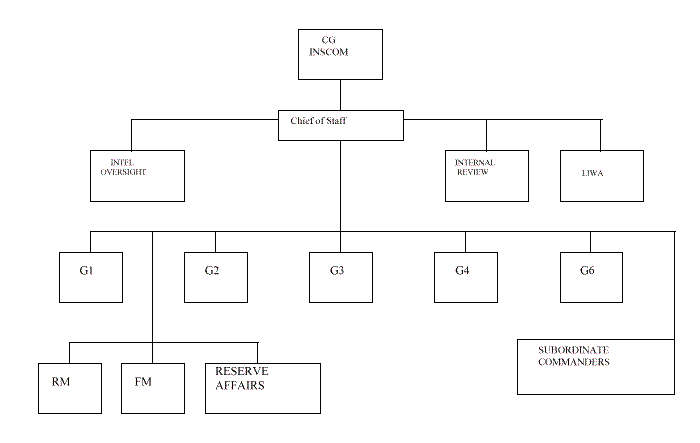
[Back]

[Index]

[Next]
Strategic, Departmental, and Operational IEW Operations
Preliminary Draft
 [Back] |
 [Index] |
 [Next] |
FM 34-37 Strategic, Departmental, and Operational IEW Operations Preliminary Draft |
The commander drives intelligence--
MG John F. Stewart, CDR USAIC& FH
(to be published) Figure 2- 1The intelligence and counterintelligence elements of the military Services are responsible for the planning, directing, collecting, processing, and disseminating military and military- related intelligence, including information on indications and warnings, foreign capabilities, plans and weapons systems, and scientific and technical developments. Counterintelligence activities and the production and dissemination of counterintelligence studies and reports are a Service responsibility as are the development, procurement, and management of tactical intelligence systems and equipment. The conduct of related research, development, and test and evaluation activities; the development of intelligence doctrine; and the training of intelligence personnel is also a Service responsibility.

